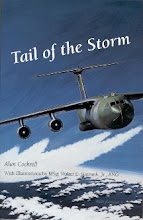I got that warm fuzzy feeling when I saw Honolulu show up on my schedule, and with most of the country still in the throws of a waning winter, Hawaii 

I'm qualified to fly the
On the way to
 engine failure, and depressurization.
engine failure, and depressurization. If you lose an engine the jet will “drift down” to its maximum single engine altitude (the low 20-thousands) where the remaining engine consumes more fuel to reach land than both engines running at economy two-engine altitude. If you make a bad divert decision you could find yourself limping toward shore with fumes in the tanks. A depressurization event will force you even lower, to 10,000 feet, where the engines will guzzle your fuel like a boozer gulping the last of his bottle. All flights are planned with enough fuel to make land under both of these circumstances, but you've got to decide correctly about whether to turn back or keep going. In Ernest Gann’s days (read Fate is the Hunter) they called the decision point the “point of no return.” Sounds troubling. Today we use “equal time point” as the decision point.
We managed to establish ourselves on the proper track, and were encouraged to see that we were following the contrails of a jet ahead of us, a thousand feet higher. We couldn't get lost now, could we? But then we overtook him. Passing him I saw that it was a silver jet with a big red and blue AA logo (Alcoholics Anonymous?) on the tail, and we got worried again; those guys couldn’t possibly know their way outside of
Soon it was time to play the Halfway-to-Hawaii game. Brian got on the PA and gave the passengers information such as true airspeed, winds, and distance. They figure where the halfway point is, write it down and pass their guess to the flight attendants. Upon reaching the halfway point we announce the winner, who gets a bottle of
Five hours after takeoff we saw the big island off the port bow (don’t you love it when I talk Navy?). We knew then we would not miss the rocks, run out of gas and swim this day. Soon after, we saw
A few years ago, knowing of the elixir’s power and wanting to share it with the family, Ellie and I decided to host a family vacation to
That trip was a resounding success and we decided to do it again a couple of years later. It was another Sunday dinner, and this time our new daughter-in-law, Kelly was there. After discussing the plans, which this time included the guys paying more of their expenses, Brad leaned over to me with a smirk on his face and whispered in a low voice, “Can Rebecca go?” I was expecting it this time. Another fine trip ensued and we got to know Rebecca well. Both times we stayed in military beach cabins—a great perk fetched by 23 years guarding the Stars and Stripes.
A couple of years after the second trip we were sitting around the Sunday dinner table with Kelly and our newest daughter-in-law, Rebecca, reminiscing about the great
The subject of a third trip came up. I looked at Rusty, wondering if he too would lean toward me for a low-toned question. Rusty was 10 years behind the older two, still in his teens.
 I suggested we wait a while longer for the next one.
I suggested we wait a while longer for the next one.
A great Hawaiian past-time: waiting for a table.




If you only knew how many times Kelly and I have discussed quitting our jobs, selling everything, and moving to Hawaii.
ReplyDeleteI want to try a different island this time. Kauai maybe. I hear there's beaches there a man has never seen.
"I hear there's beaver there, size of bobcat." The "Exlixer"... lol... priceless! Well written pop... enjoyed that very much.
ReplyDelete"They call them aviators... they say they're better than pilots... (belch)!"
ReplyDelete